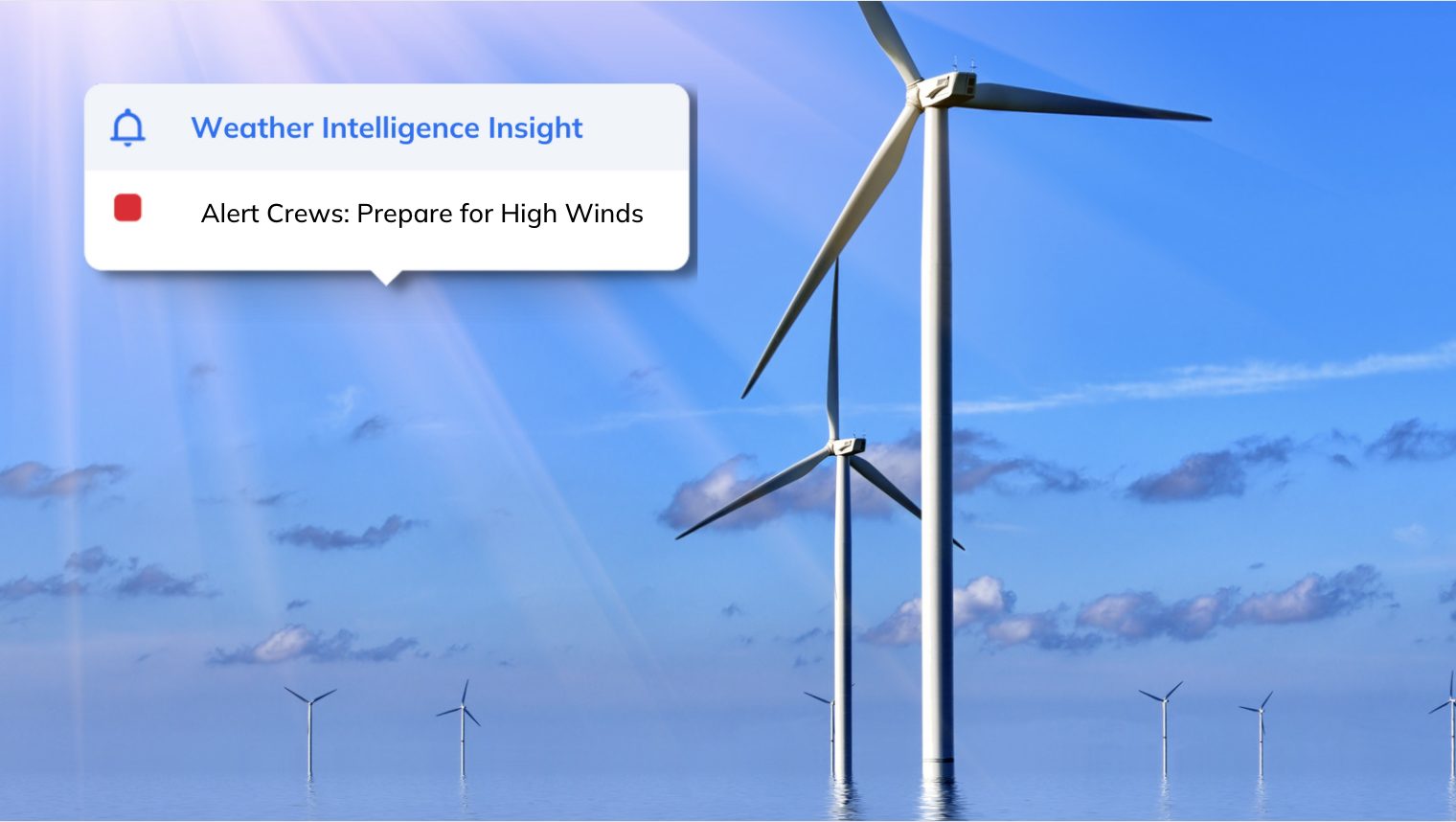Today, global wind energy production is growing at a record pace. According to a recent report published by the Global Wind Energy Council (GWEC), offshore wind has the highest growth potential of all renewable energy technologies. Experts expect more than 230 GW of new offshore wind capacity over the next decade, giving a promising outlook to meeting global net-zero emissions by 2050.
While the increased adoption of wind energy is a significant win on the path toward energy sustainability, new technologies accompany new risks – creating scenarios that endanger the lives of offshore wind crews and negatively impact project timelines.
In 2019, 865 accidents were recorded globally on offshore wind farms – more than a 22% increase compared to the previous year’s data. Of the incidents on record, 252 were considered ‘high-potential incidents.’ In other words, they were near-miss scenarios that, realistically, could have caused one or more fatalities.
While the ramp-up of offshore wind energy will undoubtedly expose more people to high-potential incidents and put them at further risk, energy companies can begin implementing strategies that mitigate the hazards. Climate resilience technology, like Tomorrow.io, fosters awareness that extends beyond questionable weather forecasting, providing actionable insight with fast and reliable data.
With wind energy quickly becoming a pillar of renewable energy production across the world, companies now have the opportunity to solve potentially fatal problems before they occur. At the very least, they can ensure a more accurate project timeline to reduce costs and optimize efficiency.
Weather’s Role in Offshore Wind Farms
Weather plays a pivotal role during the construction phase of offshore wind farms. Specifically, weather dictates when and how crews can access the site, so offshore workers must be armed with hyper-accurate, real-time weather data to help effectively analyze environmental conditions for safety and efficiency.
Wind speeds, water conditions, and lightning risk all impact a crew’s ability to access the construction site, and due to the nature of wind energy production, turbines are often located in areas that help capitalize on strong winds. Offshore wind farms also see highly variable wind speeds and wave heights throughout the day, making it hard to accurately schedule for asset protection without ever being affected by weather conditions. By using climate resilience software to analyze the past, present, and future weather data, companies can make more informed decisions on how and when to take advantage of a weather window.
Data-Driven Decision Making for Offshore Wind Farms
Up until the last decade or so, offshore wind farms relied on questionable weather forecasting that put crews and project timelines at risk, far more than necessary. While the weather has always held some level of uncertainty, climate change is fueling a rapid increase of extreme, unpredictable weather events.
So, how can offshore wind construction companies better prepare for weather events and minimize risk and operational inefficiencies? Watch to learn how Tomorrow.io’s platform can optimize safety and efficiency.
Tomorrow.io’s weather-based platform provides customers with actionable insight by utilizing accurate, comprehensive, real-time weather data gathered from satellites and sensors across the globe. In fact, we even went as far as designing and building our own constellation of small satellites to bring reliable weather forecasting to new heights. Later this year, we’re launching the first of its kind constellation, which will bring even more value to our customers through proprietary space-based data. Our platform is suitable for customers in just about any industry impacted by weather. However, it’s particularly beneficial to offshore wind construction crews – as numerous environmental and weather-based factors affect the safety and efficiency of workers.
Using Tomorrow.io’s customizable insight dashboard, teams can prioritize crew safety by closely monitoring environmental conditions in a targeted location. Users can set the platform to trigger actions based on weather parameters, sending automated alerts to offshore crews when the criteria are met. Every team also has access to dozens of expertly-crafted, pre-loaded insight parameters on the insight dashboard, giving new users the immediate opportunity to capitalize on the technology. The dashboards for offshore wind applications are under the ‘Renewables’ category and include templates like maritime, port, and crane operations. Our ready-to-use insight dashboards give companies an immediate solution that easily integrates into existing workflows, ultimately enhancing employee safety and operational efficiency.

And Tomorrow.io’s dashboard goes beyond pre-arranged insights. Offshore wind construction crews can customize existing dashboards or create their own from scratch to match the most unique geographic or environmental conditions crews face. With near and long-term weather forecasting based on current and historical weather data and over 80 layers of global weather parameters available, the platform enhances climate resilience for all of its users.
Offshore wind farms are at the mercy of a few pretty distinct environmental factors. For that reason, an offshore wind construction company may choose to strictly monitor parameters like wave height and wind speed. In that case, they would simply set up an insight dashboard to monitor the targeted conditions. Maybe wind speeds get too severe to elevate turbine crews, or maybe wave conditions exceed the height parameters for safe transit on a small vessel. Either way, once these parameters are met, an automated alert will be sent to offshore wind crews to warn them about the potential hazards or signal to operate under a strict safety protocol. With the ability to customize each alert as needed, you can significantly reduce human risk, improve operational efficiency, and ultimately improve your bottom line.
By utilizing weather technology, companies can minimize weather-related impacts for scenarios that otherwise cause unnecessary risk – making Tomorrow.io’s innovative weather platform the perfect pairing for those looking to enhance climate resiliency at every turn.
See How Tomorrow.io Can Help















